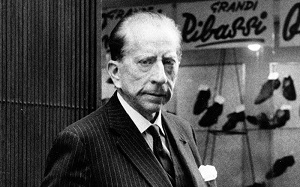“Contrary to popular modern belief, it is still quite possible for the successful individual to make his million – and more.”
Paul Getty wrote these words in 1986 in his book How to Be Rich. I read it first more than 10 years ago and liked it very much. I’ve read it again recently and was equally inspired. It is a quick and easy read. (It was written as a series of essays for Playboy magazine.) But it is loaded with practical advice for anyone that wants to build wealth: business owners, professionals, even superstar employees.
Getty was a very rich man. I’ve heard it said that in today’s dollars, his wealth was greater than Bill Gates’s and Warren Buffett’s put together.
He made his fortune by buying up oil businesses at bargain prices just after the Great Depression. A small portion of the book is devoted to telling this story. The rest of it presents his thesis: that the best way to become rich is to own or work for a growing business, and that business growth is dependent on following a dozen or so commonsense strategies.
“Although there are no sure-fire formulas for achieving success in business,” Getty says, “there are some fundamental rules to the game, which, if followed, tip the odds of success very much in the business man’s favor.”
Those rules include:
- The best way to make a fortune is to own your own business.
- The central aim of every business is to produce more and better goods (or more and better services) to more people at a lower cost.
- A sense of thrift is essential for success in business.
- Legitimate opportunities for expansion should not be overlooked.
- The business owner must run his own business. He cannot expect employees to run it for him.
- The business owner must be constantly alert for new ways to improve his products and services and increase his production and sales.
- Nothing builds confidence and volume faster than a reputation for standing behind one’s product.
One chapter talks about real estate. Getty was a big believer in real estate as a secondary investment and made millions that way. He also talks about investing in fine art. In the course of his business life, he acquired one of the greatest private collections in his time. He left much of that collection to various museums, including the Getty Museum in California.
In discussing employee compensation, Getty’s ideas belied his reputation for being a penny pincher. He was a believer in paying his employees well – as well as or better than the competition. He also believed in treating his key employees as partners, by giving them incentive-based bonuses and, in some cases, shares of profits. More than a few of his key employees became rich as a result. I was delighted to note that Getty disputed the notion that entrepreneurs should “think big and take big chances.” His success, he says, came from “thinking small” (i.e., paying attention to details) and avoiding risk at every juncture.

